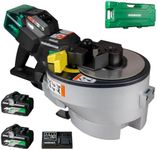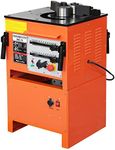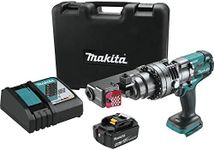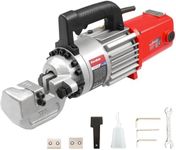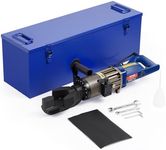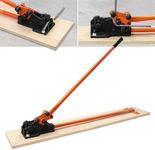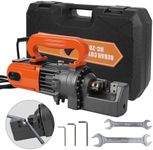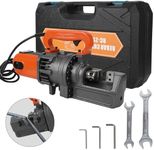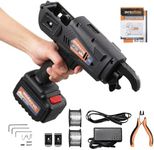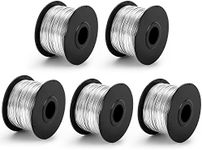Buying Guide for the Best Rebar Cutters
Choosing the right rebar cutter is essential for anyone working with reinforced concrete. Rebar cutters are specialized tools designed to cut through steel reinforcement bars (rebar) used in construction. The right rebar cutter can make your job easier, safer, and more efficient. When selecting a rebar cutter, consider the type of projects you will be working on, the frequency of use, and the specific requirements of your tasks. Here are some key specifications to consider when choosing a rebar cutter and how to navigate them to find the best fit for your needs.Cutting CapacityCutting capacity refers to the maximum diameter of rebar that the cutter can handle. This is important because using a cutter with insufficient capacity can damage the tool and make the job more difficult. Cutting capacities are usually segmented into light-duty (up to 1/2 inch), medium-duty (up to 3/4 inch), and heavy-duty (up to 1 inch or more). Choose a cutter with a capacity that matches the size of rebar you typically work with. For occasional light work, a light-duty cutter may suffice, but for regular or heavy-duty tasks, opt for a medium or heavy-duty model.
Power SourceRebar cutters can be manual, electric, or hydraulic. The power source affects the tool's portability, ease of use, and cutting speed. Manual cutters are portable and don't require a power source, making them ideal for small jobs or remote locations. Electric cutters are faster and require less physical effort, suitable for medium to large projects with access to electricity. Hydraulic cutters offer the highest cutting power and are best for heavy-duty tasks, but they are less portable and require a hydraulic power source. Choose based on the scale of your projects and the availability of power sources.
PortabilityPortability is the ease with which you can transport and use the rebar cutter on-site. This is important for jobs that require moving between locations or working in tight spaces. Manual and battery-operated electric cutters are generally more portable, while corded electric and hydraulic cutters are heavier and less mobile. If you need to move frequently or work in various locations, prioritize portability. For stationary work, portability may be less of a concern.
Cutting SpeedCutting speed refers to how quickly the cutter can complete a cut. Faster cutting speeds can increase productivity, especially on large projects. Cutting speed is often measured in seconds per cut. Manual cutters are the slowest, while electric and hydraulic cutters offer faster speeds. If you have a high volume of cuts to make, a faster cutter will save time and effort. For occasional or small-scale work, cutting speed may be less critical.
DurabilityDurability is the tool's ability to withstand frequent use and harsh conditions. This is important for ensuring the longevity of the cutter and reducing maintenance costs. Durability can be assessed by looking at the materials used in construction, such as high-grade steel for the cutting blades and robust housing materials. For heavy-duty or professional use, invest in a more durable model. For occasional use, a less durable but more affordable option may be sufficient.
Ease of UseEase of use encompasses the design features that make the cutter user-friendly, such as ergonomic handles, weight, and the simplicity of operation. This is important for reducing user fatigue and improving efficiency. Look for features like comfortable grips, balanced weight distribution, and straightforward controls. If you are new to using rebar cutters or will be using the tool for extended periods, prioritize ease of use to enhance your overall experience.
